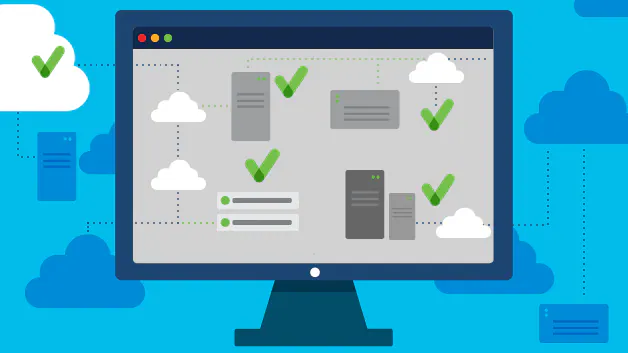The Guide to Website Downtime and Monitoring Strategies
Discover the best strategies to minimize website downtime and ensure optimal performance.
Posted by
 Sabyr Nurgaliyev
Sabyr Nurgaliyev
Table of Contents
- Introduction
- Understanding Downtime
- Importance of Website Monitoring
- Choosing the Right Monitoring Tools
- Setting Up Your Monitoring Strategy
- Enhancing Monitoring with Custom Checks
- Utilizing Status Pages for Transparency
- Setting Up Effective Alerts
- Analyzing Uptime Reports
- Preparing for Downtime
- Case Study: Downtime Recovery Success
- Frequently Asked Questions
Introduction
In today’s digital landscape, a website is often the first point of contact between a business and its customers. However, what happens when that website goes down? For small businesses, website downtime can lead to lost revenue, dissatisfied customers, and a tarnished reputation. That’s why monitoring your website’s uptime is crucial.
This guide will provide you with comprehensive strategies to minimize downtime and ensure your website remains operational. From choosing the right monitoring tools to setting up effective alerts and analyzing uptime reports, we’ve got you covered.
Understanding Downtime
What is Downtime?
Downtime refers to the period when your website is unavailable or not functioning properly. This could be due to server issues, network problems, or maintenance activities.
How Downtime Affects Your Business
The impact of downtime can be significant, affecting not only your bottom line but also customer trust and SEO rankings. A few minutes of downtime could mean thousands of dollars in lost sales and missed opportunities.
Importance of Website Monitoring
Why Monitor Website Uptime?
Monitoring your website’s uptime ensures that you are immediately aware of any issues that may arise. This allows you to address problems quickly before they escalate.
The Cost of Downtime
The financial impact of downtime can be substantial. Studies show that the average cost of downtime can reach up to $5,600 per minute. For small businesses, this could be devastating.
Benefits of Continuous Monitoring
Continuous monitoring helps you maintain a high level of service, ensuring that your website is always available to customers. It also provides insights into performance trends, allowing you to make informed decisions.
Choosing the Right Monitoring Tools
Key Features to Look For
When selecting a monitoring tool, consider features such as real-time alerts, multiple check locations, and comprehensive reporting capabilities.
Popular Monitoring Tools
Some popular monitoring tools include Uptime Friend, Pingdom, and StatusCake. Each of these tools offers different features, so it’s important to choose one that fits your specific needs.
Comparing Different Tools
When comparing tools, consider factors like ease of use, cost, and scalability. Some tools offer free versions with limited features, while others provide more robust options at a higher price.
Setting Up Your Monitoring Strategy
Define Your Goals
Before setting up your monitoring strategy, define your goals. Are you focused on minimizing downtime, improving website speed, or ensuring that critical functionalities are always available?
Determine Check Intervals
The frequency of checks is crucial. For high-traffic sites, checks every minute might be necessary, while less busy sites might only need checks every 5-15 minutes.
Select Monitoring Locations
Choose monitoring locations based on where your customers are. If your website caters to a global audience, ensure that you have monitoring stations in different regions to get a complete picture of your site’s performance.
Enhancing Monitoring with Custom Checks
Importance of Custom Checks
Custom checks allow you to monitor specific functionalities that are critical to your business, such as payment processing or login pages.
Implementing Custom Checks
To set up custom checks, identify the most important features of your website and configure your monitoring tool to keep an eye on these specific areas.
Monitoring Critical Functionalities
Critical functionalities like checkout processes or API integrations require special attention. By setting up custom checks, you can ensure that these vital parts of your website are always operational.
Utilizing Status Pages for Transparency
What Are Status Pages?
Status pages provide real-time updates on the health of your website. They can show users which parts of your site are working and which are experiencing issues.
Benefits of Using Status Pages
Using status pages builds trust with your customers by being transparent about your website’s performance. It also reduces the number of support inquiries during an outage.
How to Create an Effective Status Page
To create an effective status page, include real-time updates, historical data, and options for users to subscribe to alerts.
Setting Up Effective Alerts
Importance of Alert Systems
Alert systems notify you immediately when there’s an issue with your website, allowing you to take quick action to resolve it.
Best Practices for Alerts
Set up alerts that are clear, actionable, and sent through multiple channels (e.g., email, SMS, Slack). Ensure that alerts are only triggered by significant issues to avoid alert fatigue.
Integrating Alerts with Other Tools
Integrate your alert system with project management and communication tools like Trello or Slack to streamline your response process.
Analyzing Uptime Reports
Understanding Uptime Metrics
Key uptime metrics include the total time your site is operational, the frequency and duration of outages, and the site’s response time.
Reviewing and Interpreting Reports
Regularly review uptime reports to identify patterns or recurring issues. This analysis can help you make informed decisions about improvements.
Making Data-Driven Decisions
Use the insights gained from uptime reports to optimize your website’s performance and minimize future downtime.
Preparing for Downtime
Creating an Incident Response Plan
An incident response plan outlines the steps to take when your website goes down. This plan should include roles and responsibilities, communication protocols, and recovery procedures.
Steps to Take During Downtime
During downtime, your priority should be to identify the issue, communicate with your customers, and work towards a resolution as quickly as possible.
Post-Downtime Analysis
After the issue is resolved, conduct a post-downtime analysis to understand what went wrong and how to prevent it in the future.
Case Study: Downtime Recovery Success
Real-World Example
Consider the case of a small e-commerce site that experienced a major outage during peak shopping hours. By using effective monitoring tools and a well-prepared incident response plan, they were able to restore their site quickly and minimize lost sales.
Key Takeaways
The key takeaway from this case study is the importance of being prepared. Having the right tools and plans in place can make the difference between a minor hiccup and a major disaster.
Conclusion
Website downtime can have serious consequences for small businesses, but with the right monitoring strategies in place, you can minimize the impact and ensure your site remains operational. Start by selecting the right tools, setting up a robust monitoring strategy, and preparing for the unexpected.
Frequently Asked Questions
Q1: What is website uptime?
A1: Website uptime refers to the period when your website is operational and accessible to users. It's usually measured as a percentage of total time.
Q2: How can I monitor my website's uptime?
A2: You can monitor your website’s uptime using tools like Uptime Friend, Pingdom, or StatusCake. These tools provide real-time alerts and reports on your site’s performance.
Q3: What should I do if my website goes down?
A3: If your website goes down, first check your monitoring tool for alerts. Then, follow your incident response plan to identify the issue and resolve it as quickly as possible.
Related Articles

Learn about the common reasons why websites go down and how to fix them quickly to keep your business running.
 Sabyr NurgaliyevAug 18, 2024
Sabyr NurgaliyevAug 18, 2024
Learn how to effectively monitor website uptime, prevent downtime, and maintain optimal server performance with cutting-edge monitoring tools and strategies.
 Sabyr NurgaliyevNov 22, 2024
Sabyr NurgaliyevNov 22, 2024
Discover how to leverage cutting-edge website monitoring techniques to ensure maximum uptime, optimize performance, and deliver an unparalleled user experience. Learn expert strategies for implementing effective site monitoring and skyrocket your digital success.
 Sabyr NurgaliyevSep 1, 2024
Sabyr NurgaliyevSep 1, 2024
A deep dive into the world of network uptime monitors, downtime monitors, and server uptime. Discover how to keep your website online and your business thriving.
 Sabyr NurgaliyevAug 27, 2024
Sabyr NurgaliyevAug 27, 2024
Discover the best practices for server uptime monitoring, web application availability, and handling website downtime with expert insights.
 Sabyr NurgaliyevAug 25, 2024
Sabyr NurgaliyevAug 25, 2024
Explore everything about website downtime and how monitoring services can save your online presence. Learn about the tools, tactics, and technologies that can help you stay online 24/7.
 Sabyr NurgaliyevAug 23, 2024
Sabyr NurgaliyevAug 23, 2024